One of the most charming aspects of Portugal is the air of quiet elegance… the buildings, the art, the cuisine, and the people. One person who really made our trip a success was Joao Ralao Duarte, who is the Secretary General of the Associacao Portuguesa de Criadores do Cavalo Puro Sangue Lusitano or Portuguese breeders association.
Despite an already over-the-top work load, Jaoa insisted to driving us out of Lisbon to meet some of the more prominent breeders.
Our first stop was the Quinto do Casal Branco Estate – a huge winery, farm and stud established in 1775 and run for the past two centuries by the Lobo de Vasconcellos family. The owner of the stud, Dr José Lobo de Vasconcellos is out of central casting for the elegant Portuguese landowner. He meets us in the swish cellar of his winery, and with the Portuguese spring turning a little bothersome (this is a polite way of saying it is raining quite seriously) we head off to find his horses, driving through his extensive vineyards and grain fields. Dr Vasconcellos is a traditional breeder, believing that if you look to the quality of the horses, the horse will find its vocation.
Dr José Lobo de Vasconcellos with one of his colts: ‘If you look at a photo of my father thirty years ago with one of his horses, and me today with one of mine, it could be the same horse…
“The most important characteristics are those of functionality – we aim to breed strength and balance, a horse that is athletic and strong – not a Percheron, but strong enough to carry themselves. If you have that, then they can go on for dressage, or bull-fighting or driving.”
“But we are still breeding in a traditional way – if you look at a photo of my father thirty years ago with one of his horses, and me today with one of mine, it could be the same horse, and that’s a nice thing. Other breeds are selected to do this or that, but this breed has lots of concentrated characteristics.”
The brood mare band at Casal Branco – the pasture is so rich that the mares and foals do not need any additional feed!
And to prove his point, he produced first one young four year old, who was already showing real dressage potential under saddle, followed immediately by another four year old, of similar bloodlines, who is much more the traditional strong type destined for the bull-ring.
Our guide Joao then took us to lunch with the president of the association – Manuel de Souza Holstein Campilho – a lunch hosted by his mother, the D. Isabel Juliana de Holstein Beck Campilho. Again despite being somewhat grubby having sloshed our way around the Casal Blanco fields, we were made warmly welcome, and enjoyed splendid wine made by one of the countess’ grand-sons, Diogo de Bragança Campilho who has spent quite a lot of time in the Hunter Valley learning the vigneron’s trade. Diogo’s ambition is to combine the fruit and freshness of the New World with the elegance and the refinement of the Old in the family wine. He is certainly well on his way, just recently picking up major awards at a wine show in Dusseldorf.
Manuel de Souza Holstein Campilho’s sport is driving, and it is some tribute to the Lusitano soundness that his current team are two very white stallions, aged 19 and 20. They have already competed at the World Two in Hand Championship and are soon to be joined by another two from the family stud, for four in hand driving.
But the horse that takes our eye is no carriage horse – the tall grey three year old is destined for the dressage arena, and he has the flexibility through the back and the freedom of movement to go all the way… that’s him on the far side of this spread.
Driving in the car with Jaoa, there’s lots of time to ask questions… Is it difficult working in a closed studbook?
“Of course it is much more difficult to make an evolution because whenever a studbook is closed you can’t just go and get the blood you want. So we need to stay inside our lines, all the parents should be Lusitanos – and another thing, our breed needs a certain model. So in the first step they should be looked at to make sure they are in that type – and that makes the evolution slower.”
The stallions on the stud are out on the pasture with their little bands of mares – this stallion is described as ‘typical Veiga’ – the traditional style of the Lusitano
Are you successfully identifying specific lines that are producing a more modern dressage movement?
“The breeders don’t move that way so quickly. It was only ten years ago that we started to have results from the tests, from the dressage, from the working equitation, from the few that were in jumping, and the ones in driving. Only now can we begin to compare the results. We are in a new phase, only five or six years ago, the breeders commenced to test the mares. These are big changes, and the new rules make the breeders think more about functionality and breeding.”
This young colt by the stallion, Hercules, can really move!
“Until now we have only had graded breeding stock and that was all. Now we have three parts: the first level is just graded. The second level is recommended reproducer – on the basis of what he has done in competition – and the third level is the merit reproducer, who is the one with good progeny.”
One of the young colts at Quinta da Lagoalva de Cima, the stud of Manuel de Souza Holstein Campilho
“It is not easy with the mentality of the breeders in Portugal. Lots of them are very traditional, they are old families, and sometimes it is difficult to persuade them that they need to test their horses.”
So the recommended and merit horses are in the specified performance fields – dressage, working equitation, bull fighting?
“The people who come to buy them must know what they are buying, so they are specified.”
In Holland we now see special lines for dressage or jumping – is this going to happen in Portugal?
“I think so. Nowadays we are starting to see specific bloodlines and the breeders are starting to choose the reproducers for what they want. We are starting to understand that a stallion, Xaquiro, is beginning to be a horse that everyone knows as a good parent for dressage…”
That is the sire of Oxalis (current Portuguese dressage star) but she does not look very Lusitano?
“I know, but I am sure because since 1992 we have done parentage tests, so she is Lusitano.”
Are you worried that as you move more towards European style dressage competition, you will lose some of the unique flavour of traditional Portuguese riding?
“I think not. I think the tradition is inside the Portuguese way of riding. We still have the bull-fight, we have the working equitation which is growing and growing, so we have enough places for everyone. I don’t think we’ll lose the specificity of the Portuguese way of riding, even though we know that the horses are changing. If you look at a video of the festival of the Lusitano, in 1992, and look now, you can see that the horses are completely different.”
How many mares are there in the Lusitano studbook?
“First I need to tell you, that the breeders don’t always tell us when the mare is dead. So we have sometimes in the files more mares than there really are – but in Portugal we have around 2200 mares breeding about 1500 foals per year. If we take in the mares around the world, then I think there are more than 4000 – the majority in Brazil, France, Mexico, Belgium, United States. But we also have associations of Lusitano breeders in Holland, in Australia, Canada.”
You have many stallions but they are not allowed to breed many mares…
“Too many stallions, sometimes we say that the Lusitano stallions are not stallions but husbands of their mares. There are some stallions that breed one or two mares a year, but some of them do not improve the breed. I think we need to close the gate more, to have better stallions.”
When a stallion is first approved he can have ten mares?
“Ten mares. If he is recommended for functionality, he can have 40, and if he is a merit stallion, he can have 80. In the middle of Europe, 80 is not a lot of mares but we are not such a big breed, so maybe it is dangerous to open it more – as can happen in anything, there are fashions, and it can be dangerous to have a certain stallion as a fashion – he covers half the breed, and in 20 years you say it was a mistake, but you cannot go back.”
Joao Trigueiros is once again our guide as we visit Quinta do Pilar, the stud of Dr Henrique Abecasis and his son, Tiago Abecasis. One of the great strengths of the Lusitano breed is that so many of them end up fighting bulls. This is a fairly rigorous selection process. Tiago’s lines are based on some of the most famous bull-fighting families, but with the help of Joao who advises them in the dressage training, they are also looking for the more modern dressage type.
Bullfighting is very popular in Portugal. Unlike Spain, they do not kill the bull. One of the bull-fighting Lusitano stallions, Opinioso - no bridle!
Tiago is an environmental engineer by day, but is a man passionately in love with his vision for the Portuguese horse:
“I really want to be involved with horses for the rest of my life – because the Portuguese horse wants you to be an artist. He wants to know what you want to do – and he wants to do it for you, more than any other horse I have met in twenty years of riding.”
“The thing you must remember is that you can’t expect the Lusitano to be so motorised. If you give a sign, he will respond. From my experience, I don’t think the Lusitano has a bad temper, but they are so willing, that you only have to touch them with your leg to get a response. With other breeds of horses, there is more room for rider mistakes.”
Tiago Abecasis on one of his home bred horses, Seujanota
“On the other hand, you can sit better on the Lusitano because the movements are not so strong and the back is a little bit more flexible – that is the best part of the Lusitano. That is also why Lusitanos are better at the high movements of dressage, piaffe, passage, pirouettes and not so good competing in the extended movements. In canter they are good, they are wonderful with flying changes.”
Did your family always have horses?
“No. We started when my father was about my age, and he started to ride at the same time as I did, and my brother. From that we all became passionate about horses. We started to buy some mares, like most of the new breeders, we made some mistakes in our learning process – now I think we are on the good path. I think we have wonderful horses. The mission of our enterprise is to tell the world that the Lusitano is an excellent breed.”
“We are proving that the Lusitano is the horse that gives you the greatest pleasure in riding. We aim to show our horses internationally, doing what they do best… the Lusitano was selected for its bull-fighting abilities, so it is a horse that is very flexible, and with very high canter abilities. In trot they have the ability to do the high movements with great expression – anyone who rides for love and the fun of it, will be very enthusiastic about our horses. We think they are the best in the world.”
Go to: The Horses of Portugal – Part 3
Related articles:
The Horses of Portugal – Part 1
2009 Lusitano DressageSeminar – Ancient Breed – New Challenge
Miguel Tavora – Thinking Horseman – Part 1 – The Young Horse
Miguel Tavora – Thinking Horseman – Part 2 – The Iberian Horse
Miguel Tavora – Thinking Horseman – Part 3 – The Young Rider
Miguel Tavora – Thinking Horseman – Part 4 – Starting FEI
Miguel Tavora – Thinking Horseman – Part 5 – Teaching Teachers
The Integration Of The Baucher System in the Classical School of de la Guérinière by Miguel Tavora


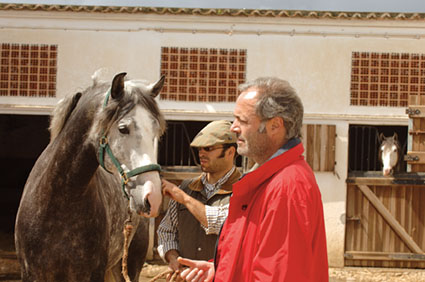
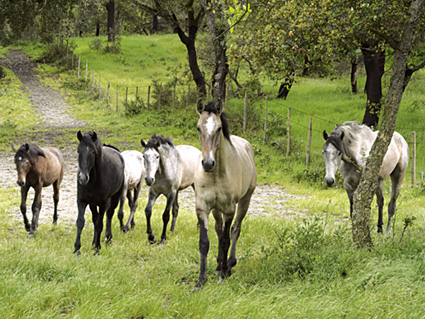
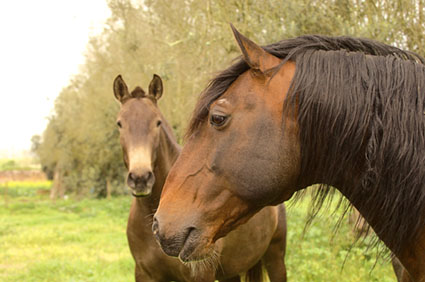
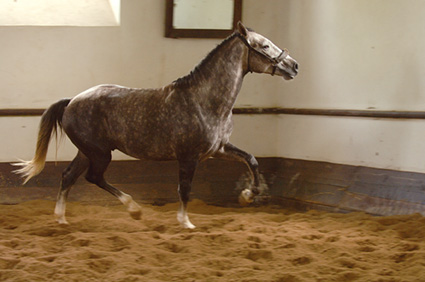
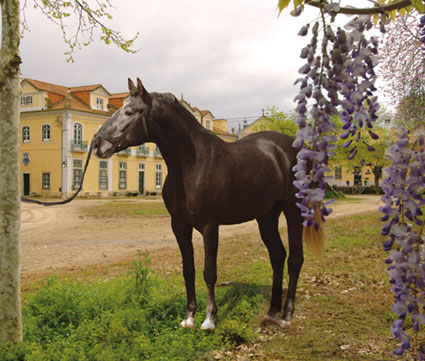
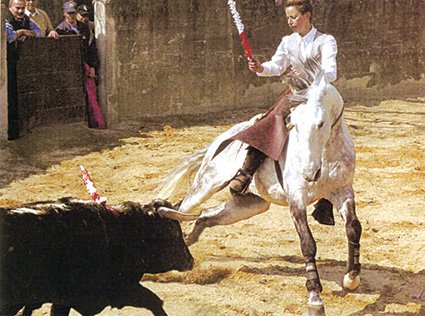
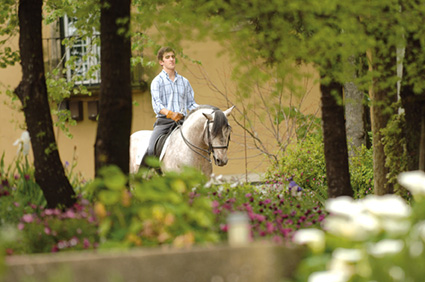
Hi i like this website its helpful as i would love to get a portuguese horse they are beuterfull 🙂